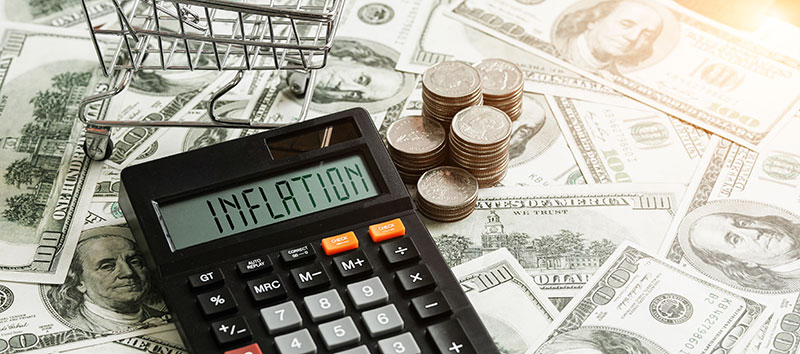
Saving Money During Inflationary Times
We’re all painfully aware of how inflation affects our daily purchases, household budgets and overall spending. It’s tempting to supplement cash purchases by using credit cards, but the generally high credit card interest rates (16% and up) will likely rise as interest rates do, making credit card debt even more expensive. You also might be tempted to tap into your reserve or emergency fund—but try to save that for its purpose. Put off major purchases, such as a new appliance or a new car, if you can.
Below are some additional tips and tools to help you save money and maintain your financial well-being.
Gas apps
Gas apps help you comparison-shop in your area to find the lowest gas prices. Free apps include GasBuddy, Waze, Fuelio and Gas Guru—check your Android or Apple app store for more. Some apps have added features. For example, Gas Guru shows you what’s near each gas station, Fuelio helps you manage expenses including tolls and maintenance and Waze provides directions to the gas station of your choice and features contactless payment at participating stations.
Grocery store loyalty programs can help you save at the pump
Inquire at your local grocery store about a loyalty program, which is usually free. Kroger/Mariano’s customers can save at least 3 cents/gallon at the pump. Although a Costco or Sam’s Club membership might seem expensive (up to $60 annually), drivers save up to 15 cents/gallon at Costco pumps—cost savings that could add up.
Gas sense
Of course, the best way to save money on gas is to drive less. The second-best way: combine trips.
Stop at the grocery store on your way home from the office. Group your errands in a smaller radius. Combine an errand with a workout; for example, hop on your bicycle to burn calories while running errands.
Food
As grocery prices go up and restaurant dining/takeout becomes more expensive, we can take comfort in knowing this is an area that we can have some control over. Planning and preparing meals at home can help contain the cost of meals.
As with gas, local grocery and pharmacy store loyalty programs offer discounts on many items on their shelves. Plus, big box stores like Costco, Sam’s Club and BJs still have good bulk buying opportunities.
If you use a credit card to make your grocery purchases, use a card with a rewards program either for grocery purchases or something else, like points to offset the cost of future travel. However, you’ll have to be careful to pay the credit card balance quickly to avoid high-interest rates on those purchases.
Other areas to consider as we “tighten our belts”
- Home oil, gas and electricity bills are also rising. Be mindful of what appliances you are using and keep lights, computers and other items off when not in use. Find out what settings on your thermostat are most efficient.
- Consider dropping your home landline if you’re already using a cell phone with reliable service.
- Review your cable television package and any streaming services you have. Cancel the packages/services you’re not using.
- Consider eliminating newspaper or magazine home delivery and switching to the digital version, which can save you 50-60% of the subscription cost.
As we navigate through this period, place added emphasis on planning your purchases, shop with intent and use any promotions or store benefits to help contain costs. Speak with your local utility providers and look for ways to reduce costs and inquire about cost savings programs they may have. A little research, legwork and downloading a few apps might just save you a whole lot of money.

